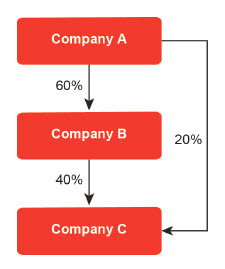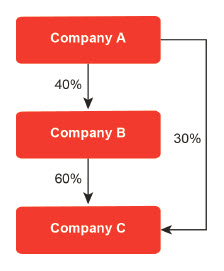Search within this section
Select a section below and enter your search term, or to search all click Consolidation and equity method of accounting
Favorited Content


Definition from ASC 810-10
Protective Rights (Voting Interest Entity Definition): Rights that are only protective in nature and that do not allow the limited partners or noncontrolling shareholders to participate in significant financial and operating decisions of the limited partnership or corporation that are made in the ordinary course of business.
Definition from ASC 810-10
Participating Rights (Voting Interest Entity Definition): Participating rights allow the limited partners or noncontrolling shareholders to block or participate in certain significant financial and operating decisions of the limited partnership or corporation that are made in the ordinary course of business. Participating rights do not require the holders of such rights to have the ability to initiate actions.
The rights noted in paragraph 810-10-25-11 are participating rights because, in the aggregate, the rights allow the noncontrolling shareholder or limited partner to effectively participate in certain significant financial and operating decisions that occur as part of the ordinary course of the investee’s business and are significant factors in directing and carrying out the activities of the business. Individual rights, such as the right to veto the termination of management responsible for implementing the investee’s policies and procedures, should be assessed based on the facts and circumstances to determine if they are substantive participating rights in and of themselves. However, noncontrolling rights that appear to be participating rights but that by themselves are not substantive (see paragraphs 810-10-25-13 and 810-10-55-1) would not overcome the presumption of consolidation by the investor with a majority voting interest or limited partner with a majority of kick-out rights through voting interests in its investee. The likelihood that the veto right will be exercised by the noncontrolling shareholder or limited partner should not be considered when assessing whether a noncontrolling right is a substantive participating right.
PwC. All rights reserved. PwC refers to the US member firm or one of its subsidiaries or affiliates, and may sometimes refer to the PwC network. Each member firm is a separate legal entity. Please see www.pwc.com/structure for further details. This content is for general information purposes only, and should not be used as a substitute for consultation with professional advisors.

Select a section below and enter your search term, or to search all click Consolidation and equity method of accounting











